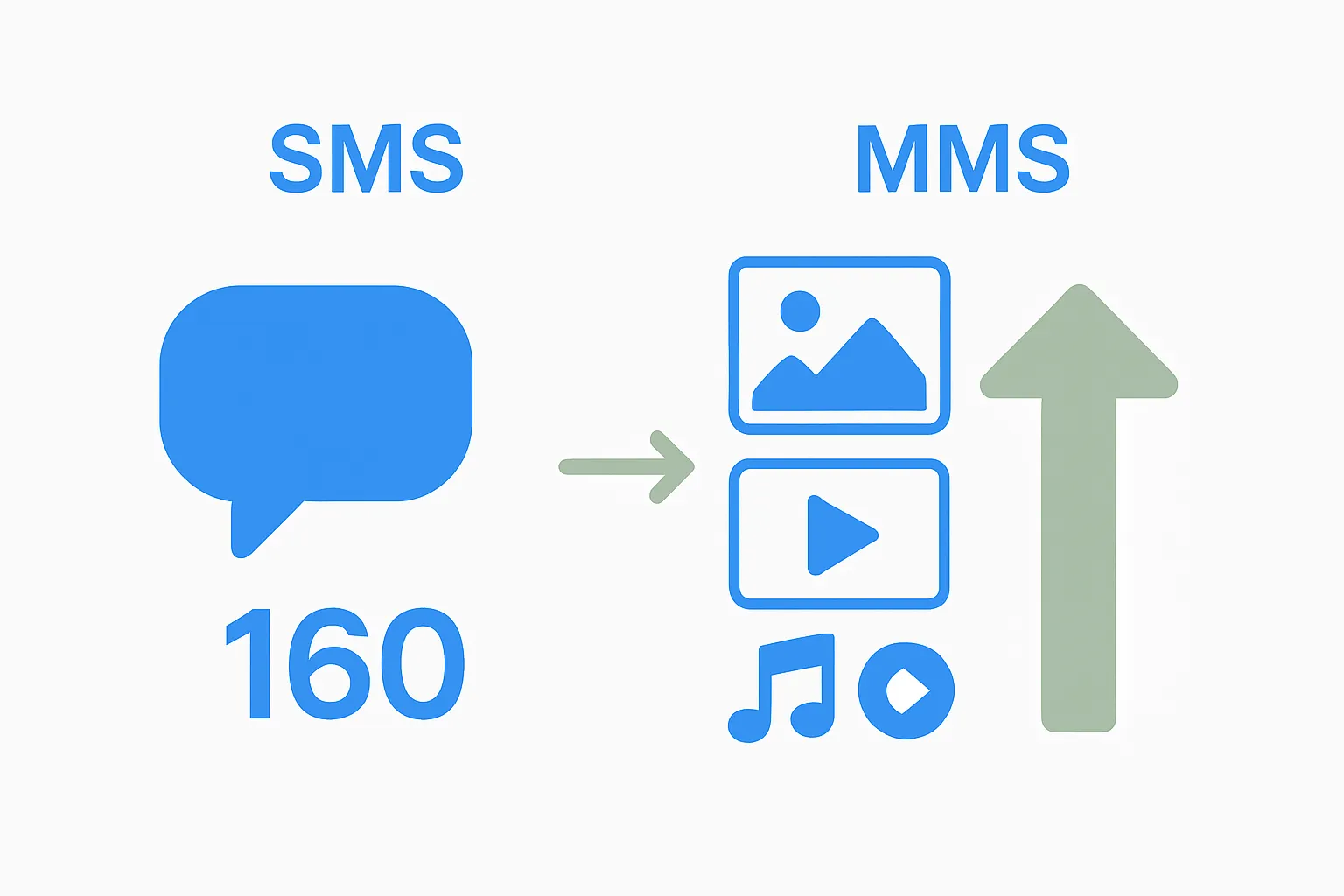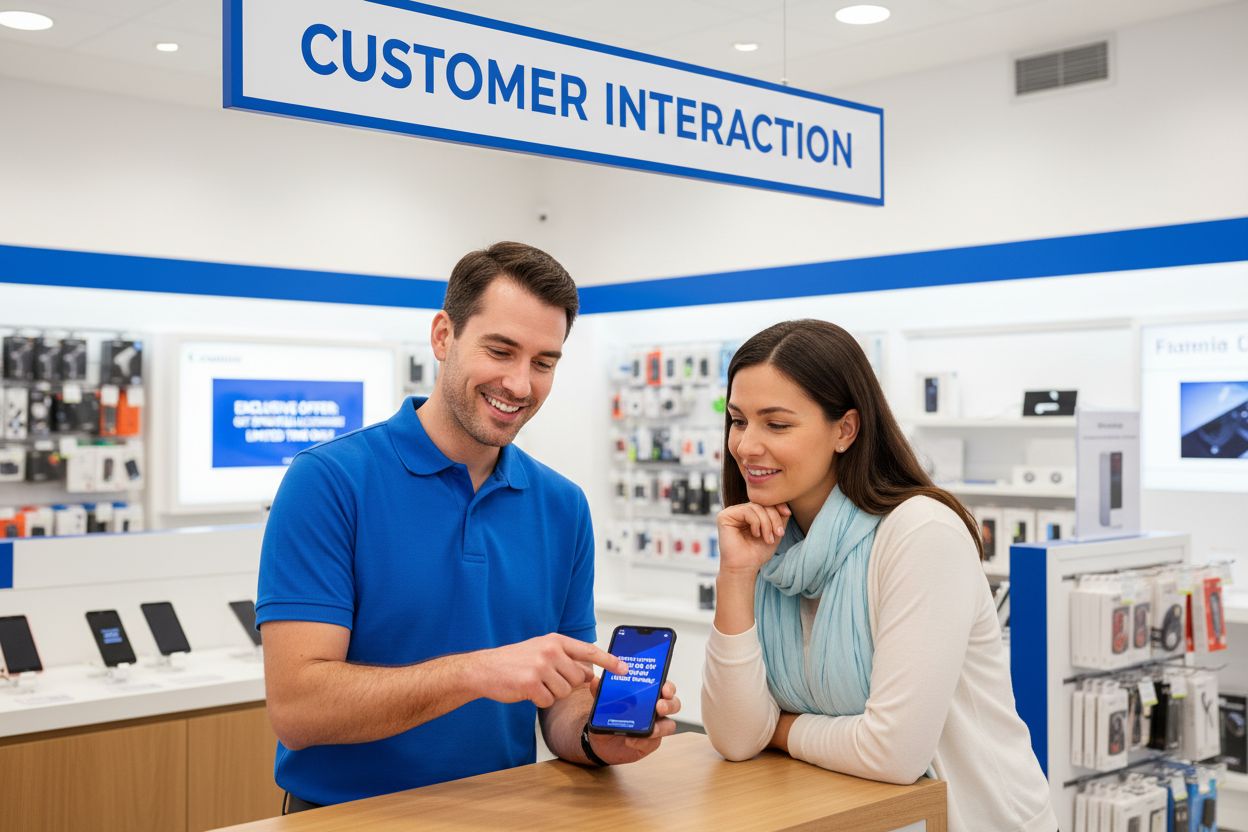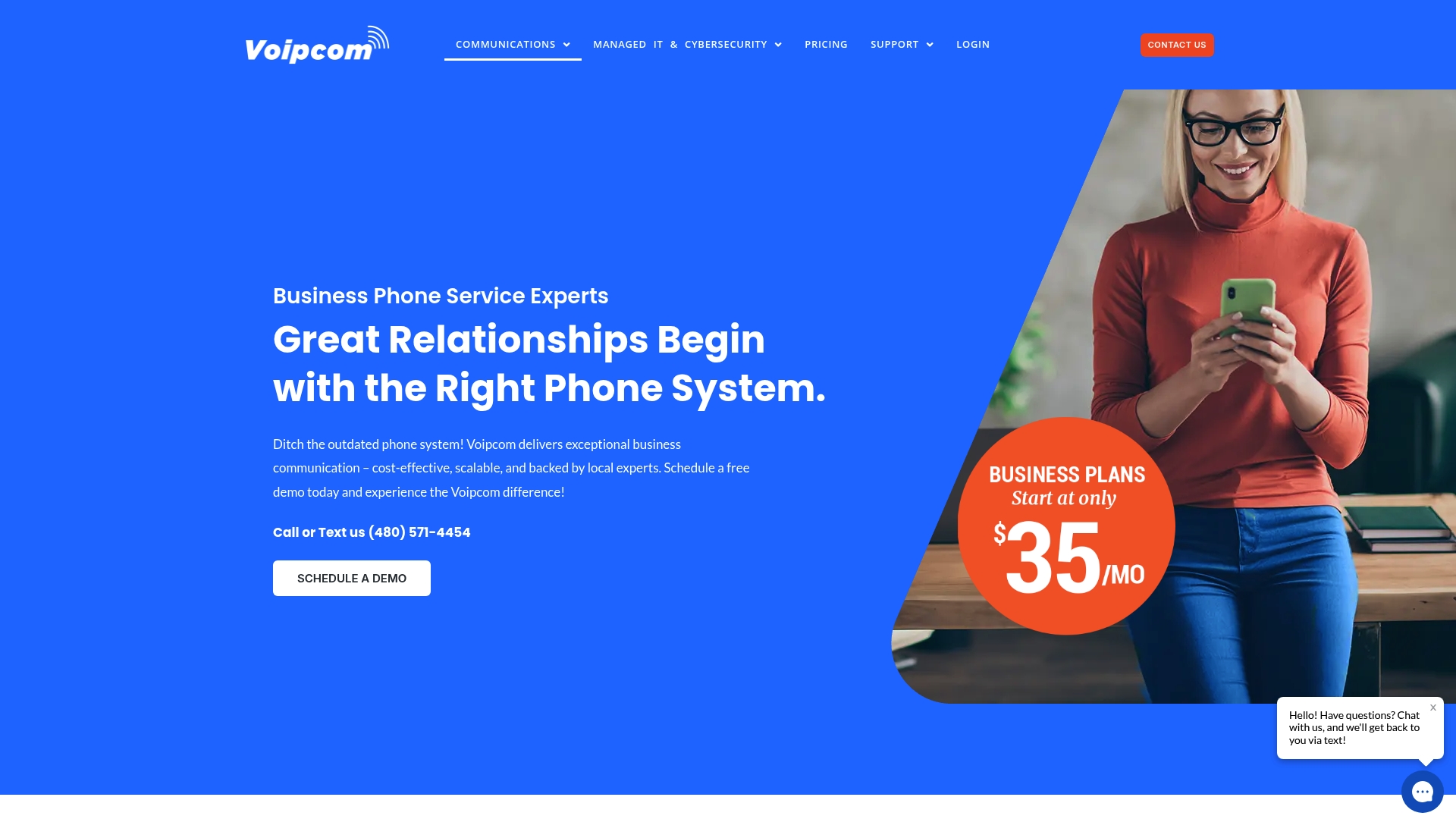MMS has changed how businesses talk to their customers. Regular text messages are limited but with MMS, companies send images, videos, and more right to your phone. Here is what might surprise you. MMS can handle messages that are several megabytes in size compared to SMS which allows only 160 characters. So while everyone thinks text is simple, the real edge comes from multimedia. This shift is making every conversation way more powerful than you might expect.
Table of Contents
- Defining MMS: A Key Communication Tool
- The Importance of MMS in Business Messaging
- How MMS Works: Technical Insights
- Key Benefits of Using MMS for Businesses
- Real-World Applications of MMS in Various Industries
Quick Summary
| Takeaway | Explanation |
|---|---|
| MMS enables rich multimedia communication | MMS allows businesses to send images, videos, and audio, enhancing engagement beyond traditional SMS limits. |
| Enhanced customer interactions through visuals | Businesses can use MMS for product demos and instructions, creating more engaging and memorable communication. |
| MMS improves speed in conveying complex information | The ability to share multimedia content allows quicker understanding of detailed messages compared to text alone. |
| MMS drives strategic advantages in various industries | From healthcare to retail, MMS delivers targeted and effective communication tailored to specific business needs. |
| MMS leads to increased marketing effectiveness | Utilizing multimedia enhances customer engagement and improves retention rates, making marketing campaigns more impactful. |
Defining MMS: A Key Communication Tool
Multimedia Messaging Service (MMS) represents a powerful evolution in business communication technologies. Unlike traditional SMS text messaging, MMS enables organizations to transmit rich, dynamic content directly through mobile networks. The mobile communication industry recognizes MMS as a versatile platform for delivering complex information quickly and effectively.
What Makes MMS Unique
MMS distinguishes itself from standard text messaging through its ability to support multimedia content transmission. Businesses can send various types of media including:
- High resolution images
- Short video clips
- Audio recordings
- Formatted text messages
- Complex graphic designs
This multimedia capability transforms how organizations communicate, allowing for more engaging and informative messaging strategies. Unlike SMS, which remains limited to plain text, MMS provides a richer communication experience that can convey nuanced information rapidly.
Below is a comparison table highlighting the key differences between SMS and MMS as discussed in the article.
| Feature | SMS (Short Message Service) | MMS (Multimedia Messaging Service) |
|---|---|---|
| Content Type | Plain text only | Images, video, audio, formatted text |
| Message Size Limit | Up to 160 characters | Several megabytes |
| Visual Communication | Not supported | Fully supported |
| Engagement Potential | Basic, limited | Enhanced, highly engaging |
| Business Use Cases | Notifications, reminders | Product demos, promos, catalogs, support |
| Technical Infrastructure | Simple, legacy networks | Advanced, supports multimedia protocols |
Technical Foundations of MMS
At its core, MMS operates through advanced mobile network protocols that support larger data transfers. Where SMS typically allows 160 characters, MMS can transmit messages up to several megabytes in size. This expanded capacity enables businesses to share detailed visual information, product catalogs, event invitations, and promotional materials directly to customers’ mobile devices.
The technical infrastructure supporting MMS includes complex encoding mechanisms that compress and transmit multimedia content efficiently. Modern telecommunications networks have evolved to seamlessly handle these more complex messaging requirements, making MMS a reliable communication tool for businesses across various industries.
The Importance of MMS in Business Messaging
MMS has transformed business communication strategies by offering a more dynamic and engaging method of information transmission. Research from the Mobile Marketing Association reveals that multimedia messaging can significantly enhance customer engagement and communication effectiveness across multiple industries.
Enhanced Customer Interaction
Businesses leverage MMS to create more personalized and impactful communication experiences. The ability to send visual content enables organizations to:
- Provide product demonstrations
- Share visual instructions
- Send instant marketing materials
- Deliver complex information quickly
- Create memorable brand interactions
These multimedia capabilities go beyond traditional text messaging, allowing companies to craft more compelling and memorable communication strategies that resonate with their target audience.
Strategic Business Applications
MMS delivers strategic advantages across multiple business domains. Customer service teams can now provide visual support, sales representatives can share instant product catalogs, and marketing departments can create more engaging promotional campaigns. The visual nature of MMS enables faster comprehension and more effective communication compared to text-only messages.
Moreover, businesses can read more about advanced messaging strategies that integrate multimedia messaging into their broader communication frameworks. This approach allows for more nuanced, responsive, and customer-centric communication models that adapt to evolving technological capabilities.
How MMS Works: Technical Insights
Multimedia Messaging Service (MMS) operates through sophisticated technological mechanisms that enable seamless transmission of multimedia content across mobile networks. Cellular network standards define the complex protocols that make advanced messaging possible.
Message Transmission Architecture
The core architecture of MMS involves multiple sophisticated components working in concert to deliver multimedia messages efficiently:
- Sender device generating multimedia content
- Multimedia messaging service center (MMSC)
- Mobile carrier network infrastructure
- Recipient device receiving and rendering content
Each transmission requires intricate encoding, compression, and routing processes that ensure reliable message delivery across diverse mobile platforms and network configurations.
This table summarizes the roles and functions of the main technical components involved in delivering MMS messages.
| Component | Role in MMS Transmission |
|---|---|
| Sender Device | Creates and sends multimedia content |
| Multimedia Messaging Service Center (MMSC) | Processes, stores, and routes MMS messages |
| Mobile Carrier Network Infrastructure | Transports data between sender, MMSC, and recipient |
| Recipient Device | Receives and displays multimedia message |
Data Encoding and Compression
MMS messages undergo advanced technical processes to optimize multimedia content transmission. Sophisticated compression algorithms reduce file sizes without compromising visual or audio quality. These mechanisms allow businesses to transmit high-resolution images, short videos, and complex graphic designs within standard mobile network bandwidth constraints.
Modern MMS technology supports multiple file formats and employs intelligent routing mechanisms that adapt to varying network conditions. Learn more about our business messaging solutions that leverage these advanced technological capabilities to provide seamless communication experiences for organizations.
Key Benefits of Using MMS for Businesses
Multimedia Messaging Service (MMS) delivers transformative communication capabilities that empower businesses to connect with customers more effectively and efficiently. Consumer engagement research demonstrates that visual communication substantially increases audience interaction and response rates.
Enhanced Marketing and Communication
Businesses can leverage MMS to create more compelling and memorable communication strategies through multimedia content. The platform offers significant advantages including:
- Increased message engagement rates
- Higher visual information retention
- More personalized customer interactions
- Faster communication of complex ideas
- Improved brand perception and memorability
These multimedia capabilities enable organizations to move beyond text-based communication, creating richer and more dynamic messaging experiences that resonate with target audiences.
Versatile Business Applications
MMS provides flexible communication solutions across multiple business domains. Customer service teams can share visual troubleshooting guides, sales representatives can instantly transmit product catalogs, and marketing departments can design visually stunning promotional campaigns. The rich media format allows businesses to communicate more nuanced and complex information rapidly.
Explore advanced marketing communication strategies that demonstrate how multimedia messaging can transform traditional business communication approaches, offering more engaging and effective outreach methods.
Real-World Applications of MMS in Various Industries
Multimedia Messaging Service (MMS) has revolutionized communication strategies across diverse industry sectors, enabling more dynamic and efficient information exchange. Medical communication research demonstrates the transformative potential of visual messaging technologies in professional environments.
Healthcare and Medical Services
In healthcare, MMS provides critical communication capabilities that enhance patient care and professional collaboration. Medical professionals leverage multimedia messaging for:
- Transmitting medical imaging results
- Sharing diagnostic visual information
- Conducting remote patient consultations
- Securely communicating complex medical data
- Enabling rapid specialist collaboration
Secure visual communication allows healthcare providers to exchange sensitive information quickly and efficiently, improving diagnostic processes and patient outcomes.
Retail and Marketing Applications
Retail businesses utilize MMS as a powerful marketing and customer engagement tool. Sales teams can instantly share product catalogs, visual promotions, and personalized shopping recommendations. Marketing departments design visually compelling campaigns that capture customer attention more effectively than traditional text-based messaging.
MMS enables retailers to create immersive shopping experiences by sending high-resolution product images, video demonstrations, and interactive promotional content directly to customer devices. Explore advanced marketing communication strategies that showcase the potential of multimedia messaging in driving customer engagement and sales performance.
Ready to Harness the Power of MMS for Your Business Communications?
Traditional text messaging no longer meets the demands of modern business. The article highlighted how Multimedia Messaging Service (MMS) transforms plain communication into visually engaging connections. If you are frustrated with text-based messages that fail to capture attention or feeling limited by old, basic phone systems, you are not alone. Many small- to medium-sized businesses want to deliver product catalogs, customer support visuals, or brand campaigns that stand out but struggle with outdated systems and unreliable service.
Make your messages unforgettable. At Voipcom, we deliver fully managed, cloud-based MMS solutions designed to modernize your business communication. Our business messaging services elevate customer engagement with rich visuals, secure transmission, and seamless integration with tools like Hosted PBX and AI calling features. Whether your team is remote, hybrid, or based in Arizona or Colorado, our responsive support team and transparent pricing remove all barriers. Visit Voipcom now to see how easily you can shift from ordinary texts to impactful MMS communication. Do not let your message go unseen by your customers. Connect with us today to get started.
Frequently Asked Questions
What is MMS in business messaging?
MMS, or Multimedia Messaging Service, is a communication tool that allows businesses to send rich content such as images, videos, and audio messages directly to customers through mobile networks, enhancing engagement and information conveyance.
How does MMS differ from SMS?
Unlike SMS, which supports only plain text messages, MMS can transmit larger messages containing multimedia content like high-resolution images, video clips, and formatted text, providing a more dynamic communication experience.
What are the benefits of using MMS for marketing?
MMS enhances marketing efforts by increasing engagement rates, improving visual information retention, and allowing for personalized customer interactions, making communication more effective than traditional text-only messaging.
In which industries is MMS commonly used?
MMS is widely used across various industries, including healthcare for transmitting medical information, and retail for sharing product catalogs and promotional materials, facilitating more dynamic communication strategies.





